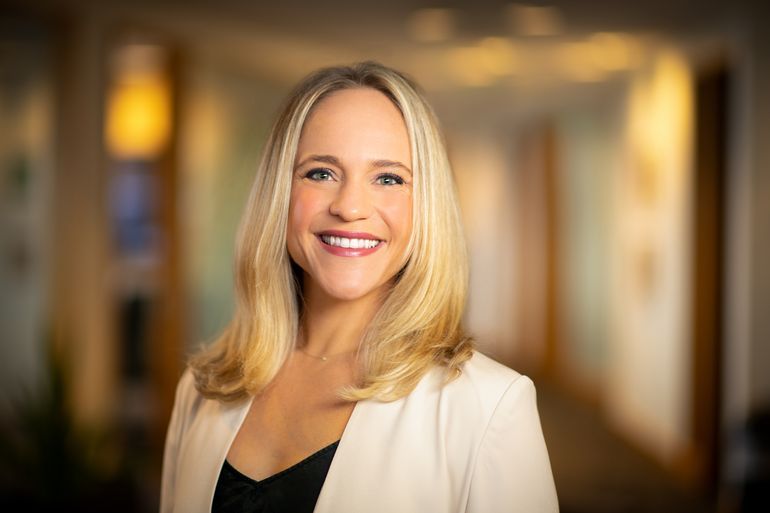
Summary
On August 30, 2024, the U.S. Department of the Treasury (Treasury) and the Internal Revenue Service (IRS) issued a notice of proposed rulemaking (the Proposed Regulations) regarding the new clean electricity low-income communities bonus credit program (the Clean Electricity Low-Income Communities Bonus Credit Program or Bonus Credit Program) which increases the amount of the Clean Electricity Investment Tax Credit (the Tech-Neutral ITC) under Section 48E of the Internal Revenue Code of 1986, as amended (the Code), pursuant to changes authorized by the Inflation Reduction Act of 2022 (IRA). The Proposed Regulations provide updated rules regarding the qualification of applicable facilities, including requirements for facility categories, nameplate capacity requirements, geographic location eligibility, placed in service requirements, and reservations for capacity limitation. The Clean Electricity Low-Income Communities Bonus Credit Program will become effective on January 1, 2025.
Key Takeaways
The Proposed Regulations:
- provide for technology-neutral renewable energy technologies that qualify for the Bonus Credit Program;
- incorporate instructions for owners of qualified facilities to notify and distribute financial benefits to occupants of qualified property;
- specify a nameplate capacity limitation test for purposes of qualifying for the Bonus Credit Program;
- iterate general recapture rules and requirements for property which ceases to be eligible property; and
- provide general procedural guidance with respect to claiming Bonus Credit Program amounts.
Overview of the Clean Electricity Low-Income Communities Bonus Credit Program
The Bonus Credit Program is intended to transition from existing guidance for bonus credit amounts for low-income communities under Code Section 48(e), which sunsets in 2024, to incorporate additional clean energy technologies, including solar, wind, hydropower, and geothermal energy generation systems. The Bonus Credit Program for the Tech-Neutral ITC provides an important step to incentivize taxpayers’ transition to clean energy electricity generation and allows low-income households to receive financial benefits from renewable power.
The Bonus Credit Program is an “allocated” bonus credit that requires an application and must be approved. Only a total of 1.8 gigawatts of direct current electricity capacity for each calendar year of the Bonus Credit Program will be awarded and the application process governs how Treasury and the IRS, in coordination with the U.S. Department of Energy (DOE), will determine which taxpayers receive allocations of environmental justice capacity limitations with respect to applicable facilities. While the Proposed Regulations indicate certain procedural and documentary attestations to qualify for the Bonus Credit Program, Treasury and the IRS indicate that supplementary guidance will be published in the future to clarify the specific rules and allocations applicable to taxpayers.
Facility Categories
The Proposed Regulations provide that an applicable facility means any qualified facility that i) is a non-combustion and gasification facility with a greenhouse gas emissions rate of not greater than zero; ii) has a maximum net output of less than five megawatts (MW) of alternating current electricity; and iii) meets the criteria of at least one of the four facility categories, identified in the table below.
|
Category Number |
Facility Description |
Bonus Program Increase |
Brief Definition of Facility |
|
Category 1 |
A facility located in a low-income community. |
10% |
The facility must be in a low-income community as defined by certain census tract income metrics. |
|
Category 2 |
A facility located on Indian land. |
10% |
The facility must be located on federally recognized Indian land. |
|
Category 3 |
A facility that is part of a qualified low-income residential building project. |
20% |
The facility is installed on a residential rental building that participates in a covered housing program or other specified affordable housing program and the “financial benefits” of the produced electricity are allocated equitably among the occupants of the dwelling units. |
|
Category 4 |
A facility that is part of a qualified low-income economic benefit project. |
20% |
The facility qualifies if at least 50 percent of the “financial benefits” of the produced electricity are provided to a Qualified Household with income of less than 200 percent of the federal poverty line adjusted for family size, or less than 80 percent of area median gross income. |
Financial Benefits for Category 3 and Category 4 Allocations
Code Section 48E provides that “electricity acquired at a below market rate” will be considered as a “financial benefit.” The Proposed Regulations further clarify the meaning of a “financial benefit” for both Category 3 and Category 4 facilities. Category 1 and Category 2 facilities do not require the sharing of financial benefits.
Financial Benefits of Category 3 Facilities. The Proposed Regulations specify that at least 50 percent of the financial value of the electricity produced by a facility must be equitably allocated to the occupants of the Category 3 property (a Qualified Residential Property). These same rules also apply to both multi-family property and single-family Qualified Residential Property. The Proposed Regulations also clarify that the building itself must participate in a proscribed affordable housing program (rather than tenants receiving certain housing benefits).
Equitable Allocation of Financial Benefit for Category 3 Facilities. The Proposed Regulations clarify that the equitable allocation of financial benefits incurs different rules, depending on whether financial benefit is distributed to occupants through utility bill savings or through alternative means. For financial value distributions through utility bill savings, the financial benefits are deemed allocated equitably if at least 50 percent of the financial value of the electricity produced by the facility is distributed as utility bill savings in equal shares to each building dwelling unit, or if such distribution is made proportionally based on the low-income dwelling unit’s square footage, or each low-income dwelling unit’s number of occupants. The Proposed Regulations provide that financial benefits that are not distributed via utility bill savings will be equitably allocated if at least 50 percent of the financial value of the electricity produced by the facility is distributed to occupants using one or more methods identified in Housing Notice 2023-09 for a “master-metered” building, available at this link, or through future applicable guidance.
Calculation of Financial Value. The determination of the financial value of the produced electricity is the greater of either i) 25 percent of the “gross financial value” of the annual electricity produced by an applicable facility, or ii) the “net financial value” of the annual energy produced by the applicable facility. Gross financial value is defined as the sum of i) the total self-consumed kilowatt-hours produced by an applicable facility multiplied by the Qualified Residential Property’s metered volumetric price of electricity, ii) the total exported kilowatt-hours produced by an applicable facility multiplied by the Qualified Residential Property’s volumetric export compensation rate for kilowatt-hours of electricity, and iii) the sale of any attributes (including U.S. federal, state, or tribal renewable energy credits or incentives) associated with an applicable facility’s production.
The Proposed Regulations define “net financial value” through ownership. If a qualified facility is commonly owned, the net financial value is the gross financial value of the annual electricity produced, minus the annual average cost of the applicable facility over the useful life of such facility (including debt service, maintenance, capital expenditures, and other costs associated with construction, maintenance, and operation of such facility). With respect to third-party ownership where the facility and Qualified Residential Property are not commonly owned and the facility owner enters into a power purchase agreement or other contract for electricity services, the net financial value is defined as the gross financial value of the annual electricity produced, minus any payments made by the building owner and/or the building occupants to the facility owner for electricity services with the facility in a given year.
Benefits Sharing Statement for Category 3 Facilities. The facility owner must prepare a statement of the financial benefits, including a calculation of the facility’s gross financial value, net financial value, the financial value as distributed to occupants of the Qualified Residential Property, and a description of how the financial benefits are to be distributed (i.e., through utility bill savings or otherwise). A Qualified Residential Property owner must also formally notify the occupants of the units regarding the development of the facility and the planned financial benefit distributions.
Financial Benefits of Category 4 Facilities. The Proposed Regulations provide that to qualify as a Category 4 facility, i) the facility must serve multiple qualifying low-income households, ii) at least 50 percent of the facility’s total output in kilowatts must be assigned to qualifying households, and iii) each qualifying household must be provided a bill credit discount rate of at least 30 percent.
Low-Income Verification. Applicants must submit documentation in accordance with IRS guidance to establish financial benefits for Category 4 facilities upon placing an applicable facility into service. A qualifying household’s low-income status is determined at the time of enrollment and does not need to be re-verified. Applicants may use income verification (such as paystubs, federal or state tax returns, or credit agency verifications) or categorical eligibility (including proof of enrollment in federal assistance programs such as Medicaid) to satisfy these requirements. However, self-attestation from a household is not a permissible verification method.
The Five Megawatt Limitation
The Proposed Regulations require that an applicable facility must have a maximum net output of less than five MW, measured in alternating current (the Five MW Limitation). This requirement would be measured by the nameplate generating capacity of the applicable facility, which includes only functionally interdependent components of property, that are operated together, and that can operate apart from other property to produce electricity, at the time such facility is placed in service. The determination of an applicable facility’s maximum output is based on the nameplate capacity of the applicable facility. The nameplate capacity for purposes of the Five MW Limitation is the maximum electrical generating output in MW that an applicable facility produces on a steady state basis and during continuous operation under standard conditions, measured by the manufacturer and consistent with the definition of nameplate capacity provided under 40 CFR 96.202. The Proposed Regulations provide that the International Standard Organization conditions should be used to measure the maximum electrical generating output of an applicable facility, as applicable. Further, electricity generating units that generate direct current power before converting to alternating current power (such as solar photovoltaic systems), should use the nameplate capacity in direct current power; otherwise, the nameplate capacity in alternating current should be used.
Location Criteria for Low-Income Communities
An applicable facility is treated as located in a low-income community or on Indian land if the applicable facility satisfies the Nameplate Capacity Test for Location. An applicable facility is treated as located in a low-income community or on the relevant geographic area if 50 percent or more such facility’s nameplate capacity is in a qualifying area. This percentage is determined by dividing the nameplate capacity of the applicable facility’s electricity generating units located within the qualifying area by the total nameplate capacity of all electricity generating units of the applicable facility.
Additional Selection Criteria and Reservations of Allocations
At least half of the total capacity limitation of 1.8 gigawatts of direct current capacity for each calendar year of the Bonus Credit Program will be reserved for qualified facilities meeting the Additional Selection Criteria relating to ownership and geographic area. In addition, a portion of the Category 1 facility allocation will be set aside for certain behind-the-meter (BTM) facilities.
Ownership for Additional Selection Criteria. The Proposed regulations provide that ownership criteria for an applicable facility are based on specific characteristics of an applicant, including whether an applicant owner is i) a tribal enterprise; ii) an Alaska native corporation; iii) a native Hawaiian organization; iv) a renewable energy cooperative; or v) a qualified tax-exempt entity. An applicant who wholly-owns an applicable facility through a disregarded entity for U.S. federal income tax purposes is treated as the owner of the applicable facility. An applicant that is treated as a partnership for U.S. federal income tax purposes that also qualifies as an entity described above with respect to ownership for Additional Selection Criteria will be deemed as the owner of an applicable facility, if such applicant owns (directly or indirectly) at least one percent interest in each material item of partnership income, gain, loss, deduction, or credit and is a managing member or general partner under applicable U.S. or tribal law.
Geographic Criteria for Additional Selection. The Proposed Regulations provide that a qualified facility must be located in a Persistent Poverty County, or a census tract identified in the most recent Climate and Economic Justice Screening Tool in order to meet the geographic criteria. Generally, a Persistent Poverty County is any county in which 20 percent or more of the residents have experienced high rates of poverty over the last three decades. Further, a census tract described in the Climate and Economic Justice Screening Tool is defined as a census tract that is greater than or equal to the 90th percentile for energy burden or the 90th percentile for PM2.5 particles, respectively, and is greater than or equal to the 65th percentile for low-income, as defined by the U.S. federal poverty level. Geographic criteria do not apply to Category 2 facilities.
Sub-Reservations of Allocations for Category 1 Facilities. A capacity limitation reserved for Category 1 facilities will be subdivided for each year of the Bonus Credit Program for facilities seeking an allocation reserved specifically for eligible residential BTM facilities, which include rooftop solar systems. The remaining capacity limitation is available for applicants with front of the meter facilities and non-residential BTM facilities. Specific guidance regarding the sub-reservations and allocations for Category 1 facilities will be published by the IRS in the Internal Revenue Bulletin.
Existing Facilities
The Proposed Regulations provide that existing facilities which are placed in service prior to being awarded an allocation of capacity limitation will not be eligible to receive an allocation under the Bonus Credit Program.
Recapture
Recapture Rules Generally. The Proposed Regulations authorize the recapture of the benefits of the Bonus Credit Program relating to the Tech-Neutral ITC for any property that ceases to be eligible for such benefits during the five-year period beginning on the day in which a qualified facility is placed in service, in coordination with Code Section 50(a).
Exception to the Recapture Rules. An exception to the recapture rules applies for any property that ceases to be eligible property if, within 12 months from the date on which the taxpayer becomes aware (or should reasonably have been aware) that such property is no longer eligible property, such taxpayer restores the property’s eligibility.
Recapture Events. The Proposed Regulations identify several events which trigger recapture of Bonus Credit Program benefits, including i) Category 3 or Category 4 facilities ceasing to provide financial benefits; ii) Category 3 facilities failing to allocate financial benefits equitably among occupants of the dwelling units; iii) Category 4 facilities ceasing to provide at least 50 percent of the financial benefits of produced electricity to qualifying households or failing to provide such households the required minimum 30 percent bill credit discount rate; iv) the residential property of which Category 3 facilities are a part ceasing to participate in a covered housing program or other affordable housing program; or v) a facility increasing its maximum net output or nameplate capacity in violation of the Five MW Limitation.
The Application Process
The Application Rules Generally. Applications will be evaluated, and allocations of capacity limitation will be awarded, based on guidance published by the IRS in the Internal Revenue Bulletin. In the event a facility category is over-subscribed, a lottery system may be used to allocate similar applicants. Each application will require information, documentation, and attestations to demonstrate eligibility for an allocation and project. Further, applicants may not utilize administrative appeals for decisions regarding allocations in the event of an unfavorable determination.
DOE Reporting and Confirmation. Once an eligible property is placed in service, the owner must confirm information regarding the facility and provide any additional documentation to the DOE. The DOE will review the placed in service documentation and attestations to provide a recommendation to the IRS to determine whether the facility continues to meet the eligibility criteria for the Bonus Program. The IRS will then determine whether such facility should retain its allocation or whether it should be disqualified, in consideration of the DOE’s findings and the facts and circumstances of the facility. Each applicant must receive confirmation from the IRS and the DOE regarding eligibility before claiming the increased credit amount.
A Tribal consultation is scheduled for September 27, 2024, and a public hearing is scheduled for October 17, 2024. Public comments must be submitted by September 30, 2024, through the online federal rulemaking portal available at www.regulations.gov.
Treasury and the IRS request comments on all aspects of the Proposed Regulations, and specifically call for additional commentary regarding:
- whether changes to the definitions and requirements of the Bonus Credit Program are needed;
- whether additional federal affordable housing programs and certain state housing programs should be incorporated with respect to the facility categories;
- alternative approaches to the Five MW Limitation that would further incentive the deployment of qualified facilities in low-income communities;
- whether a 30 percent bill credit discount rate is feasible for Category 4 facilities, including whether a rate of 30 percent or greater would be feasible if transitioned in over time, how such a transition may be appropriately reached, and the impact of a minimum bill discount credit rate for Category 4 facilities that is distinct from benefit requirements for existing or planned state programs;
- alternative methods for delivering financial benefits where bill credit discounts are not available or feasible;
- specific requirements that may address any uncertainties related to the treatment of financial benefits from the Bonus Credit Program as income for U.S. federal income tax purposes or, relatedly, the impact on eligibility for public assistance; and
- whether additional ownership criteria for new and emerging market businesses may be applied with respect to the Bonus Credit Program.
Our team would be pleased to assist you in your strategic planning. For more information on issues pertaining to tax and energy and climate solutions, please contact Wilson Sonsini attorneys Elina Coss, Nicole Gambino, Andrew Bryant, Brandon King, or Jaron Goddard.
- Privacy Policy
- Terms of Use
- Accessibility





